Norway has been at the top of many intrepid traveller's hit lists for some time now. The dynamic landscapes, massive seasonal variety and culture of outdoor living are probably to blame for that. Think about hiking in Norway, and most people think forests or fjords, with formidable coastal views. As a result, most people visit in summer, but there's a real beauty to visiting Norway in the winter too - whether it be to head to those same fjords, or further north, to the Arctic Circle.
Winter in Norway is characterised by snow - lots and lots of snow! It's the perfect time for all sorts of snowsports, from skiing to dog-sledding, and even fatbike cycling. And let's not forget winter hiking; when the landscape is carpeted in snow, there's a chance to see the northern lights, and the trails are far quieter than in summer time.
How Cold is Winter in Norway?
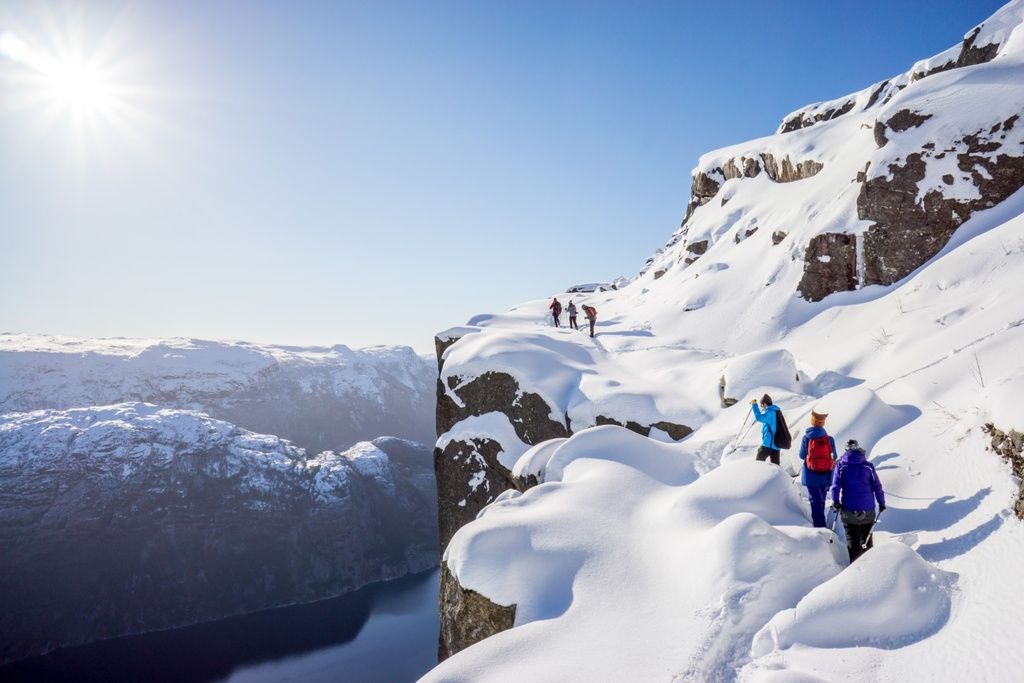
Norway is located in the northern hemisphere, and so the winter months are December, January and February. Because Norway stretches from 57° to 78° north, there are variations in the climate. Along the coast, temperatures tend to hover around freezing, while weather inland and in the mountains might sink down to between -10°C and -20°C. In places like Svalbard, a Norwegian archipelago in the High Arctic, they'll sink even lower. In those latitudes, you'll experience snow from September to April, and more during the coldest months.
Winter in Norway is also characterised by mørketiden, or the 'winter darkness'. This refers to the period of time known as polar night when the sun doesn't rise above the horizon. This takes place within the Arctic Circle, but much of Norway will experience only a few short hours of daylight.

Polar night conjures up images of pitch darkness, but if you visit Norway in the winter, you'll experience a few hours of twilight before the sun rises in the middle of the day. This is a period known as the 'blue hour' and it has an eerie beauty to it.
Why Should You Go Winter Hiking in Norway?
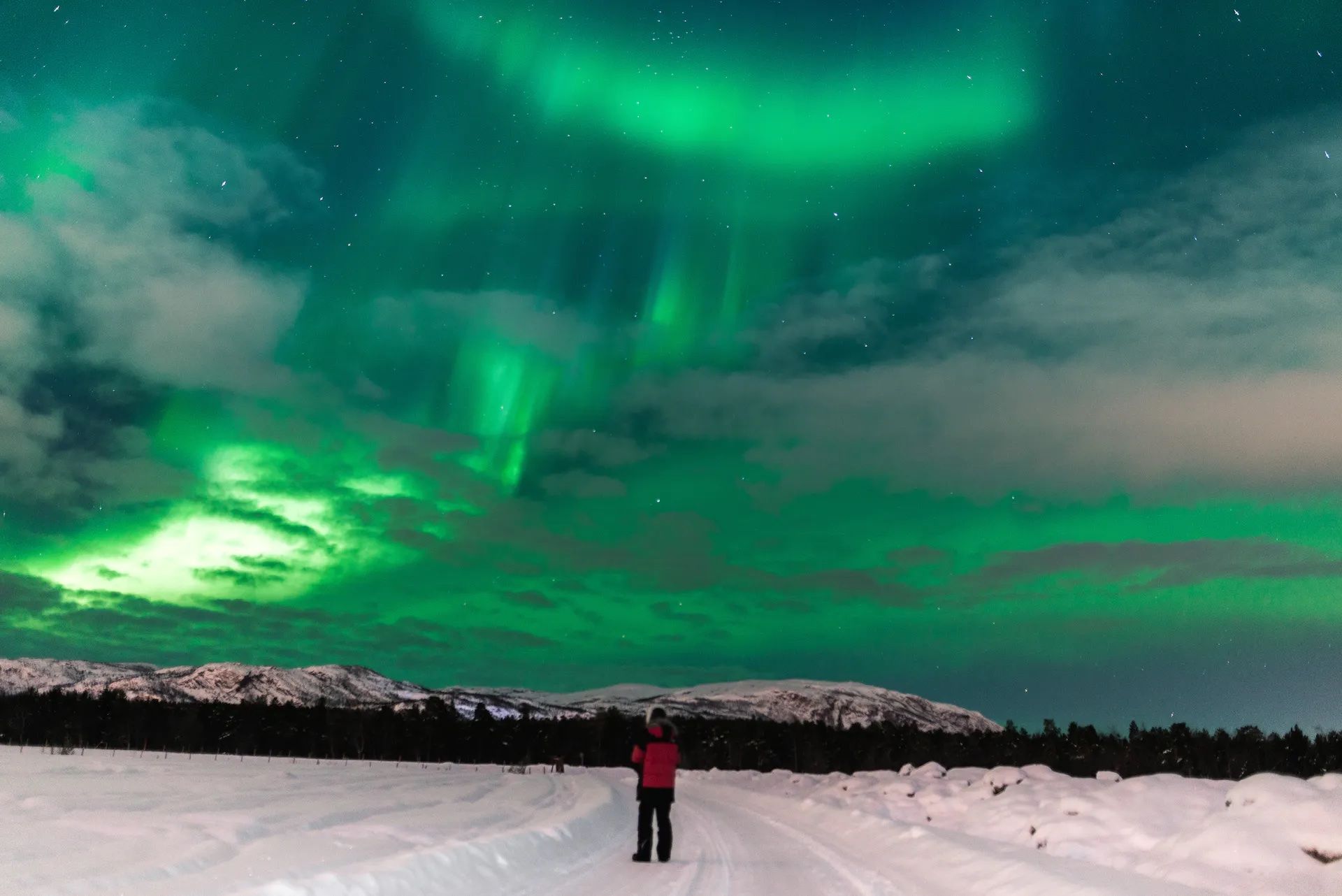
For a start, winter in Norway is beautiful. The landscape carpeted in snow; the northern lights dancing above you. And although it's cold outside, there are plenty of saunas where you can go and warm up afterwards. Another compelling reason to go hiking in Norway in December (or any of the winter months, in fact) is that there are far fewer crowds. It's an ideal time to tackle the trails leading to Norway's most popular viewpoints, such as Trolltunga.
Hiking in Norway in winter also gives you the opportunity to try out some new pieces of kit. You might need snowshoes - they'll distribute your weight evenly over the snow and make sure you don't sink too deeply into it. Some mountain hikes will require the use of crampons, which will help you keep your grip if you're crossing glaciers. If you go on a guided hike - and that's a good idea, considering the weather conditions - your guide will provide these items for you, and give you training on how to use them.
So, now we've convinced you that winter is the best time to hike in Norway, where do you go? These are five of our favourite winter hikes in Norway.
1. Ryten and Kvalvika Beach Hike, Lofoten Islands
2. Orvvosfossen Waterfall, Finnmarksvidda
3. Kjeragbolten, Lysefjord
4. Preikestolen, Lysefjord
5. Trolltunga, Hardanger Plateau
It’s important to note that the route descriptions below are only short summaries, designed to inspire but not to serve any navigational purpose. They are not intended to guide you on the route and further mapping and planning will be required if you want to safely walk any of the trails featured. When winter hiking, we would always recommend going with a guide. They'll have expert knowledge in navigating in the snow, dealing with icy and hazardous trail conditions, and in using winter gear like snowshoes.
Winter Hikes in Norway, Mapped
We've mapped the trailheads for these winter Norway hikes, and graded them 'moderate' and 'challenging'. Please be aware that adverse weather conditions will make any hike more challenging - and that if you ever feel concerned about your safety in poor hiking conditions, just turn back.
5 of the Best Winter Hikes in Norway
1. Ryten and Kvalvika Beach Hike, Lofoten Islands
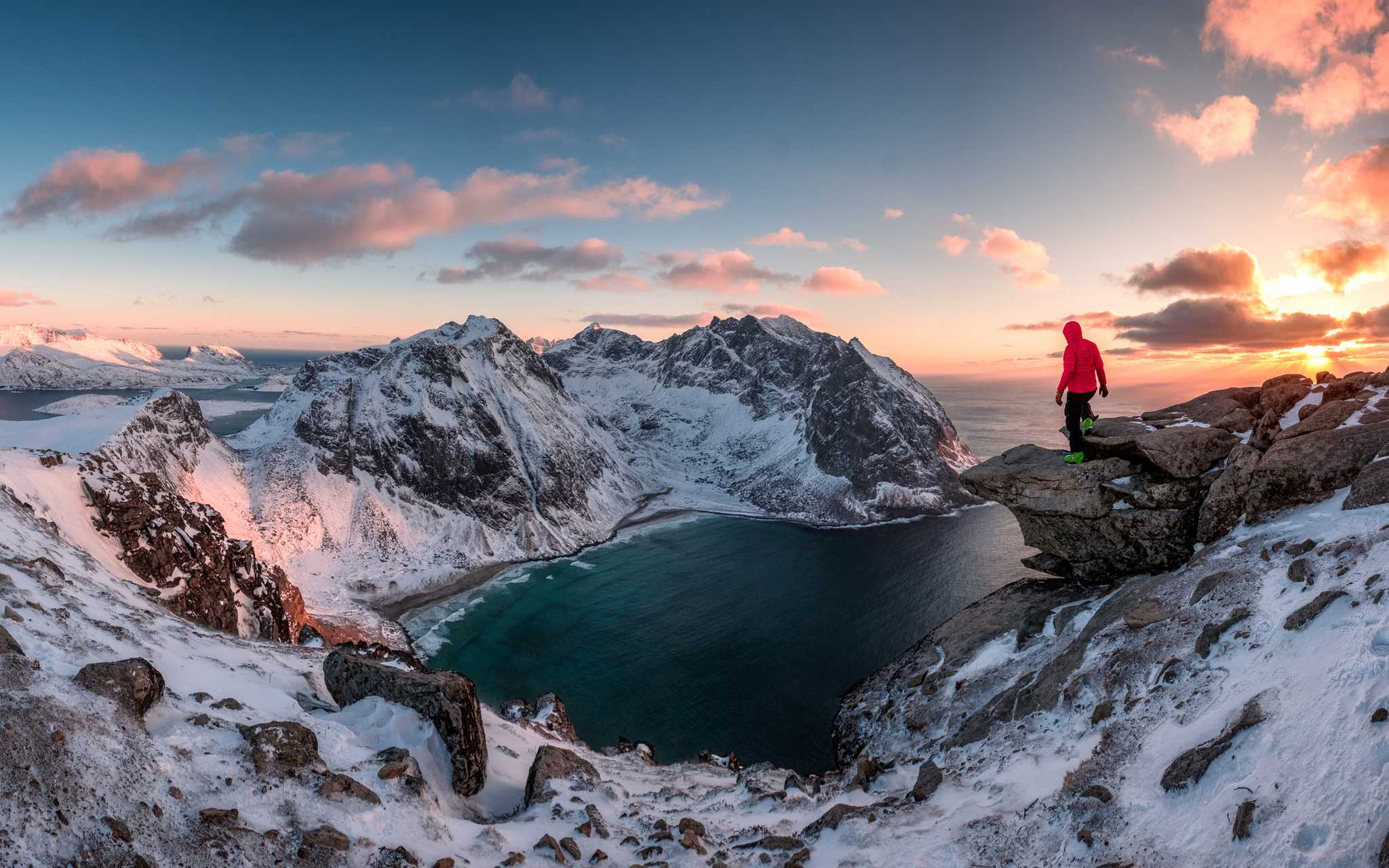
- Start/Finish: Kvalvika parking lot (circuit)
- Distance: 5.6 miles (9km)
- Walking time: 5 hours
- Difficulty: Challenging
- Best for: Arctic beach views
Accessible only on foot, isolated Kvlavika Beach is surrounded by steep cliffs. The hour-long trail to the beach is a popular hike on Lofoten, but in the winter months it'll be deserted - just how we like it! We recommend incorporating an ascent of Ryten (543m), a clifftop nearby, and creating a circuit hike. The trailhead is on the side of the 806 road from Fredvang - a path through a wooded area. It might be covered in snow, but the route is signposted - we would, however, recommend bringing a map (or a guide) to way find.

Follow the trail past two lakes, veering left around the right hand shore of the second one. You’ll head up a rocky path to a boulder field. You’ll see two large boulders where several paths meet - head straight on for the summit. You'll have a view over the ocean and iconic Kvlavika Beach, which is even more striking with the surrounding coastline dusted in snow. After admiring the views, retrace your steps to the boulders, and turn right to head down to the beach via a path and several wooden walkways. You'd have to be very brave to go for a swim next year! Instead, we recommend hiking back to the start point through birch woodland, and going in search of a hot cup of tea.
2. Orvvosfossen Waterfall, Finnmarksvidda
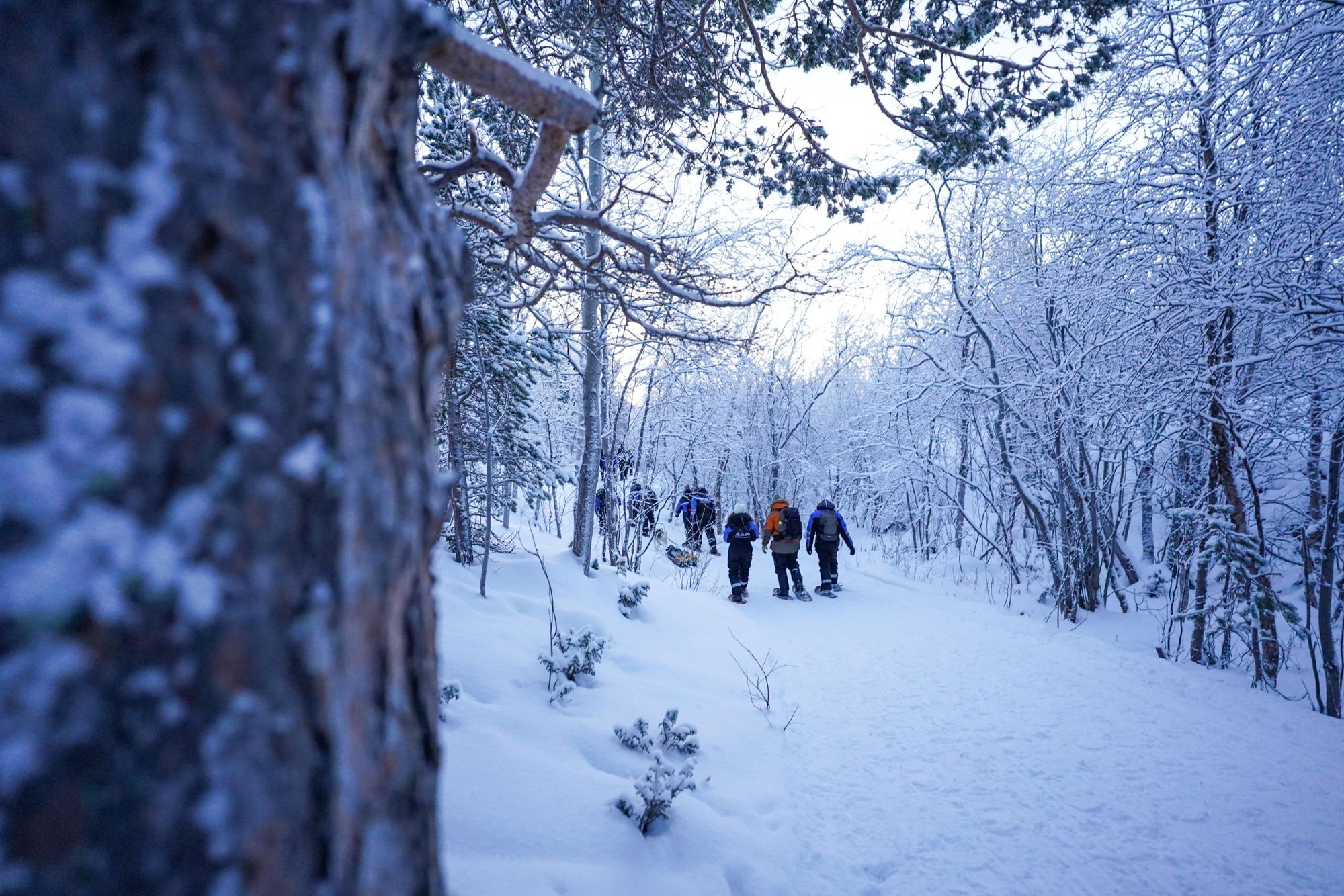
- Start/Finish: Gargia Lodge
- Distance: 2.4 miles (4km)
- Walking time: 3 hours
- Difficulty: Moderate
- Best for: Frozen waterfalls
Norway's Finnmark Plateau (or Finnmarksvidda) is a vast plateau in Arctic Norway, studded with small lakes and rivers, and tracts of pine forest. It's the ideal spot for winter snowshoeing in Norway, with numerous trails - each guide will have their own favourite routes to take you on.

This snowshoe trail takes you through the tranquil Gargia Forest, past pine trees with snow-laden branches. You'll begin at Gargia Lodge and follow the trail through the forest and along the shores of a small river until you reach Orvvosfossen waterfall. In the winter months the water is frozen, making it even more spectacular. Stop to enjoy the view before heading back down the trail.
3. Kjeragbolten, Lysefjord
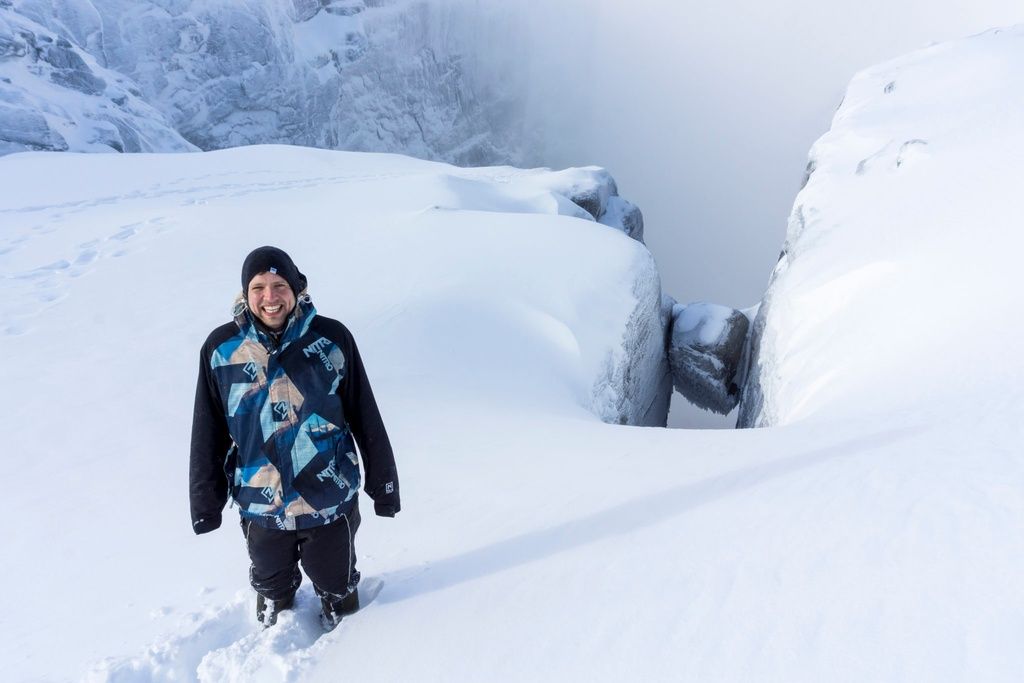
- Start/Finish: Kjerag car park (out and back)
- Distance: 6.8 miles (11km)
- Walking time: 6-7 hours
- Difficulty: Challenging
- Best for: Arctic beach views
Kjeragbolten is a curious boulder was lodged in this rock face around 50,000 years ago. As the last ice age ended and the climate warmed, this rock was jammed between these cliff faces as the glaciers melted. This is a truly peculiar feature and provides a glimpse into the region’s geological history.
Head to Stavanger ferry port and cross the Lysefjord by ferry. This is one of the most famous fjords in the Stavanger and Ryfylke region - you’ll spot the Kjerag boulder before ascending and gaining a totally different perspective of this mysterious phenomenon.
When you land on the bank of the fjord, you’ll embark on a challenging hike up to 825m (2,707ft) above sea-level, zig-zagging up 26 hairpin turns from the Lysebotn village up to the Sirdal mountains. From here, you'll climb steeply over the first mountain ridge, and downhill to Little Storedal. Then you'll follow a steep ridgeline up onto the Kjerag massif itself.
The hike takes you through a barren landscape with lots of rocks and sheer cliffs. The terrain is difficult - especially in the snow - but eventually you'll reach the cairn on Nesatind and be rewarded with a panoramic view of the snow-blanketed Lysefjord. You'll find Kjeragbolten itself about 300 metres south of the cairn - the route there is signposted. Due to the sheer drops along this route, and the difficult terrain, we'd recommend even experienced hikers do this one with a guide.
4. Preikestolen, Lysefjord
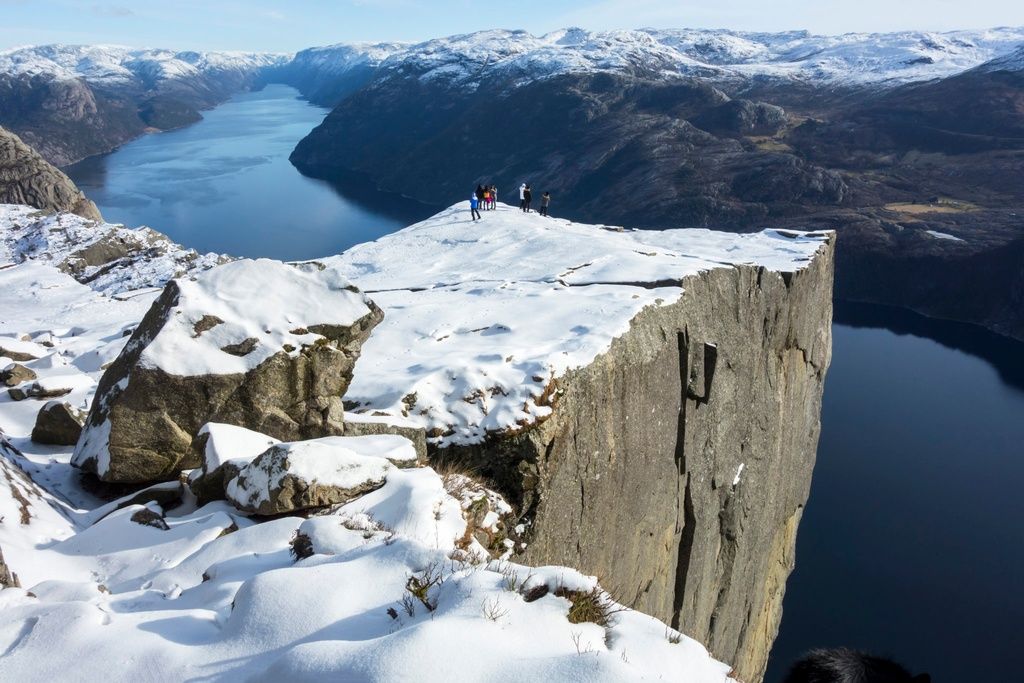
- Start/Finish: Preikestolen trailhead (out and back)
- Distance: 5.4 miles (8.8km)
- Walking time: 4-5 hours
- Difficulty: Moderate
- Best for: Iconic views without the crowds.
Preikestolen needs little introduction. Standing 604m (1,981ft above the Lysefjord and first visited as a tourist destination in 1900, the Pulpit rock is one of Europe’s most famous natural icons and has been named by CNN and Lonely Planet as one of the most beautiful viewpoints in the world.
Hike to the vertigo-inducing, 25 by 25m ledge from Preikestolen Mountain Lodge. It takes most people around three or four hours to complete the trail. The path ascends around 450m, winding through the forest and climbing up through rocks. It’s been well maintained, with wooden walkways over boggy areas and stone steps built by Nepalese sherpas. Although the trail might be covered in snow, red 'T's help demarcate the route, as do reflective iron poles.
It's a more difficult walk than during the summer - due to the trail becoming slippery due to ice and snow - but you'll really get to enjoy the tranquility of the Lysefjord, which looks particularly magical under a blanket of snow.
5. Trolltunga, Hardanger Plateau
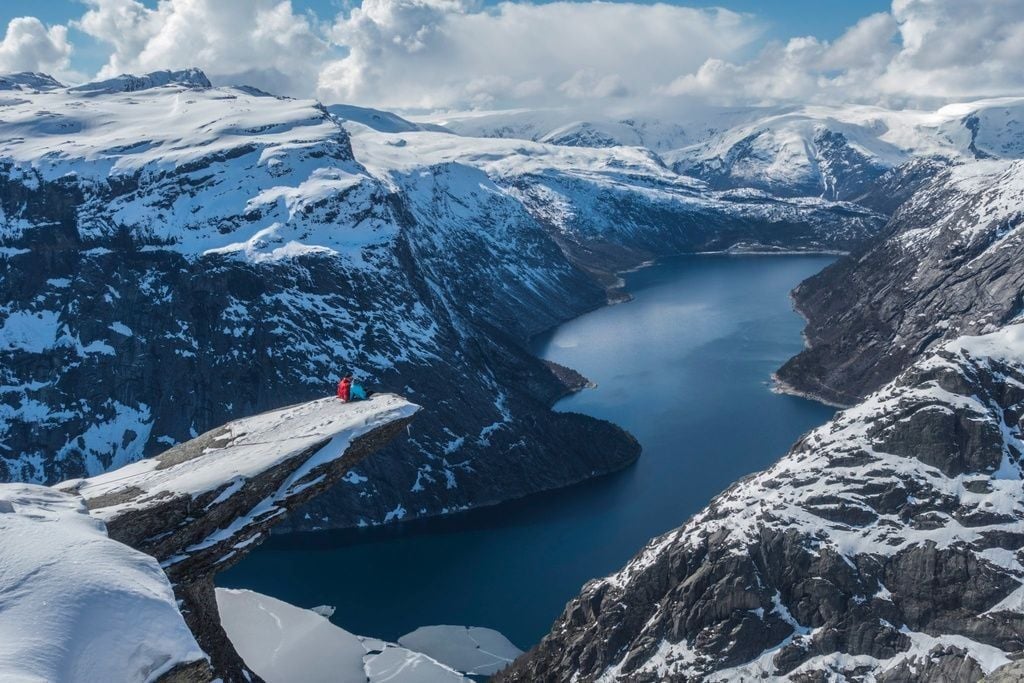
- Start/Finish: P3 Mågelitopp (out and back)
- Distance: 11.8 miles (19km)
- Walking time: 12 hours
- Difficulty: Challenging
- Best for: Experiencing Trolltunga's quiet side
This is Norway's most famous hike, and for that reason, it is the most crowded in the summer. Meaning ‘Troll’s Tongue’, the jutting rock above the fjords is worth the trip in summer. But during winter, well, it’s really something.
Situated on the Hardanger Plateau, a winter paradise used by explorers to train for arctic expeditions, this winter hike will truly get you into the wild. Challenging in the summer months, it's even more difficult in the winter - we'd recommend only going with a guide.
Start your hike at P3 Mågelitopp (you can save time by starting the hike there, but car parking spaces are very limited and require advance registration). Follow the trail as it climbs gently up a valley, before ascending more steeply up a rocky slope to Gryteskaret Pass. Considered one of the most challenging stretches of the hike, you'll likely need spikes on your shoes for this part. From here you’ll continue to Trombeskar Pass and descend towards a small lake, before heading across a mountain plateau, with spectacular views of Ringedalsvatnet. Climb up to Trolltunga on a rocky, snow covered path, and take in those fjord views.
The hike can take in excess of 12 hours in winter, so many tour operators run this as an overnight hike. Options available include several traditional wooden cabins along the route, or in 'Arctic glamping' tents.
What to Wear When Hiking in Norway in Winter
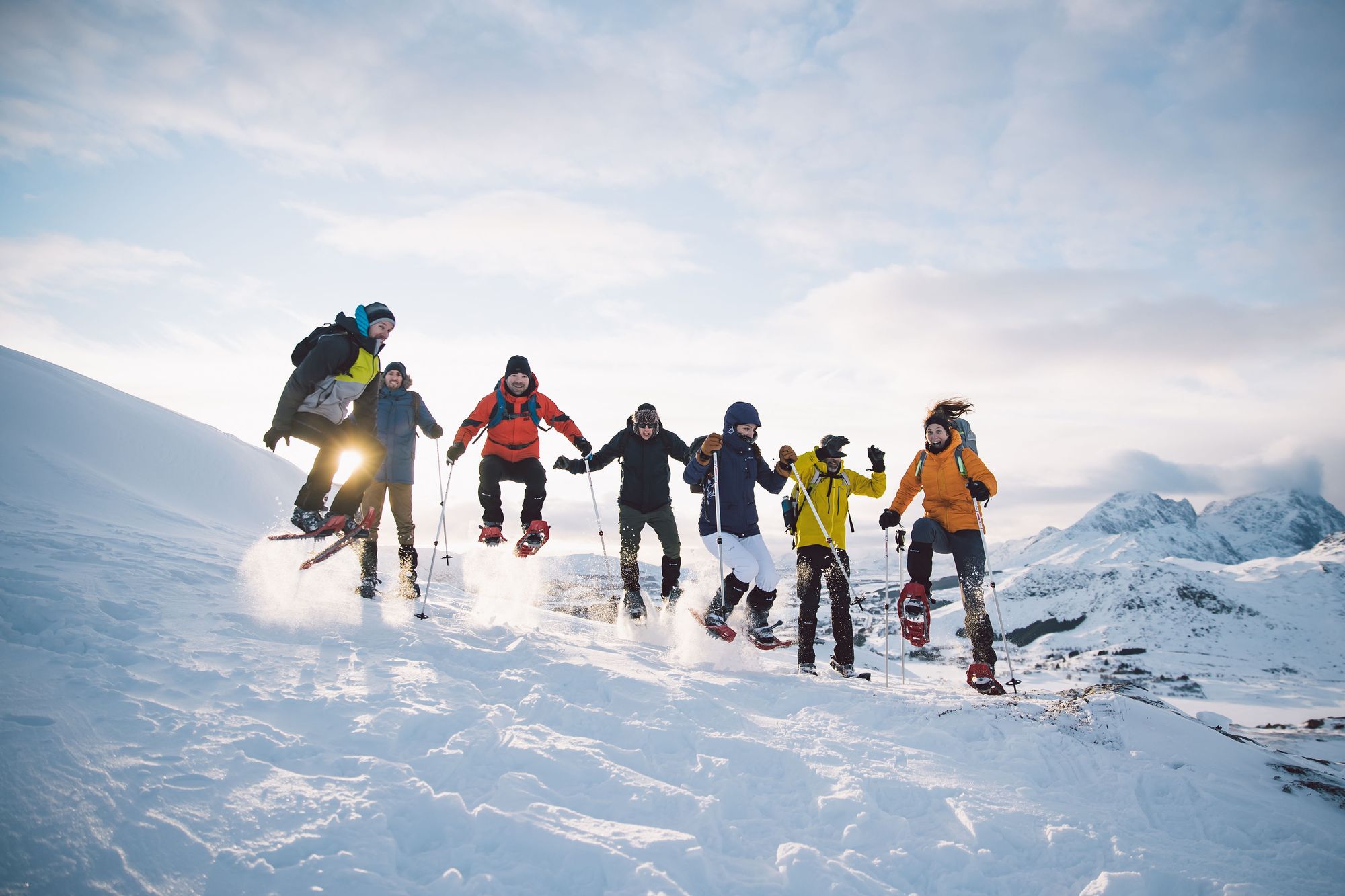
All this will require some heavy-duty warm clothing and more layers than a Tarantino movie. We recommend packing:
- Thermal baselayers – two sets (ideally wool)
- Wool or fleece thermal mid-layer
- Waterproof winter hiking trousers or ski salopettes for snowshoeing (breathable)
- Waterproof winter hiking boots, ideally Gore-Tex to keep your feet dry
- Waterproof jacket (such as Gore-Tex, to wear over your down jacket)
- Down or synthetic jacket
- T-shirts (ideally wool)
- Neck scarf/snood or balaclava
- Wool or fleece hat
- Warm gloves or mittens (waterproof such as ski gloves), plus some warm gloves for around town in the evenings
- Thick wool or synthetic socks – 4 to 5 pairs
For a full kit list, check out the Kit List section of our Hike, Kayak and Chase the Aurora in Lofoten Adventure.
Feeling inspired? Come with us on a winter hiking adventure in Norway.



